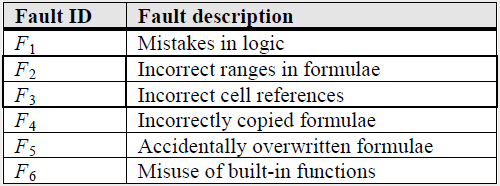Authors
Pak-Lok Poon, Fei-Ching Kuo, Huai Liu, & Tsong Yueh Chen
Abstract
Purpose − An alarming number of spreadsheet faults have been reported in the literature, indicating that effective and easy-to-apply spreadsheet testing techniques are not available for "non-technical", end-user programmers. This paper aims to alleviate the problem by introducing a metamorphic testing (MT) technique for spreadsheets.
Design/methodology/approach − The paper discussed four common challenges encountered by end-user programmers when testing a spreadsheet. The MT technique was then discussed and how it could be used to solve the common challenges was explained. An experiment involving several "real-world" spreadsheets was performed to determine the viability and effectiveness of MT.
Findings − Our experiment confirmed that MT is highly effective in spreadsheet fault detection, and yet MT is a general technique that can be easily used by end-user programmers to test a large variety of spreadsheet applications.
Originality/value − The paper provides a detailed discussion of some common challenges of spreadsheet testing encountered by end-user programmers. To our best knowledge, the paper is the first that includes an empirical study of how effective MT is in spreadsheet fault detection from an end-user programmer’s perspective.
Sample

For our experiment, we used five spreadsheets with natural faults (i.e., real faults inadvertently introduced by the developers) from the EUSES spreadsheet corpus.
Faults were identified using a list of six common and major spreadsheet fault types.
Publication
2014, Information Technology & People, Volume 27, Issue 4, pages 440-462
Full article
How can non-technical end users effectively test their spreadsheets?
